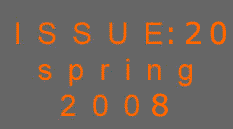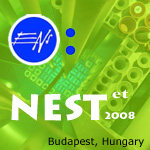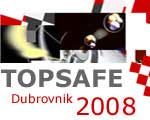
The Advanced Reactor Group (GRA) of The Spanish National Technological
Platform for R&D on Nuclear Fission Energy (CEIDEN).
The National Technologic Platform
for Nuclear Fission Energy R&D CEIDEN is
the organisation coordinating the Spanish
R&D
needs and efforts in the field of fission nuclear technology.
Its objective is to develop joint projects that affect different
entities with similar problems, and to present a single position
responsible for leading to the international proposals or compromises.
In the CEIDEN Platform all the sectors related to the Spanish
nuclear
R&D
are present and its scope includes both nuclear power plants
currently in operation and future reactors. Any Spanish entity
related to nuclear R&D may become a CEIDEN member.
The CEIDEN strategic agenda addresses all those
technology-related areas of nuclear fission
energy which technical, industrial or scientific aspects.
With this
purpose in mind, nine technological areas were identified: Materials
Behaviour, Fuel Reliability, HLW and Spent Fuel Management, Non
Destructive Testing, Equipment Reliability, I&C, Safety and
Risk technologies, LWR and Radioprotection and New Plant Designs.
In order to develop the New Plant Designs Area,
CEIDEN launched a single task force called the Advanced
Reactor Group (GRA). The purpose of this group is to
explore short, medium and long-term nuclear fission energy technologies
and initiatives.
Twenty-one Spanish entities take part in the GRA, with the participation
of industry, research centers, universities and regulatory
bodies.
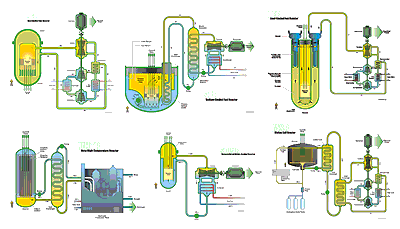
One of the main features of the GRA is its ability
to join capabilities, views and efforts from the Spanish industry,
research centres, regulatory body and universities in contact
with the nuclear field. This characteristic has been recently
recognized by the European Commission as the optimal kind of
national framework for the development of nuclear R&D projects.
In addition, this multidisciplinary
quality allows both constituting working groups with high quality
experience in different areas
and assuring the transfer of knowledge from the older generation
to the young one.
Moreover, The GRA aims to channel
all the information related to International R&D programs
in the nuclear field, as the European Framework Programs, in
order to streamline the participation
of all its members.
The GRA activities have classified according
to five
relevant areas:
-
The Generation III and Generation III+ reactors
Area
-
The Generation IV reactors Area
-
The IAEA INPRO initiative Area
-
The Transmutation Area
-
The Simulation area
The GRA Generation III and III+ area aims
to follow up the activities related to Gen III reactors. Two
complementary lines have been
recognized as of interest within this project. Firstly, to identify
the most suitable licensing process for a potential nuclear power
plants build in Spain, taking USA, Finland, France and UK as
available examples of licensing framworks. Secondly, to assess
the technology capabilities of the Spanish industry for determining
its optimal participation level in such projects.
The main purpose of the GRA Generation
IV Area is to gain knowledge and know-how through participating in all
the international ongoing activities concerning Generation IV
innovative systems. The Generation IV Forum, GIF, has selected
six technologies for their development. It seems that two of
them have been identified as the most promising ones for a commercial
expansion: the Sodium Fast Reactor (SFR) and the Very High Temperature
Reactor (VHTR). Although Spain is not a direct member of GIF,
any member of the Spanish nuclear sector may participate in any
of the GIF projects throughout the EURATOM membership.
In addition, the European Commission Framework
Programs (FPs) usually define, among other R&D needs, a set
of European R&D projects in connection with the GIF identified
technologies. One of the GRA Generation IV area purposes in this
sense is to
identify the FPs projects of importance for the CEIDEN members
and to coordinate an integrated participation. As the Sodium
and VHT reactors have been chosen within both the GIF and the
next FP (seventh), the short term focus objective of this area
is to manage a Spanish integrated contribution to these two
projects.
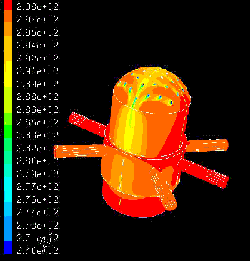
Given that Spain is an OIEA INPRO full member, the main objective
of the GRA INPRO Area is to perform a tracking of the INPRO
activities and initiatives. Nowadays, INPRO aims at developing
a selected
group of innovative nuclear systems. The GRA INPRO Area members
have studied and selected three projects within the INPRO tasks
and intend to monitor their activities.
The objective of the GRA Transmutation
Area is to perform a tracking of any
activity related to the design of radioactive waste transmutation
reactors. In this direction,
and in a similar way to other GRA areas, all the technologies
in consideration will be assessed and a selection will be made
based on the suitability of a short and medium term deployment
in the Spanish framework. At the same time as for Generation
IV, the European Commission has defined a set of transmutation
projects
to be developed through the Framework Programmes. Consequently,
the most interesting Frame Program projects will be identified
and
a consensus for an integrated Spanish participation will be reached
within the GRA Transmutation Area.
The objective of the GRA Simulation
Area is
to serve as support for the rest of the GRA Areas by identifying
the simulation needs inside the Spanish nuclear sector and by
improving the Spanish simulation capabilities. Therefore, the
current needs will be identified and the codes that could cover
these needs in a better way will be selected and studied. As
expected, this group is tightly linked to the others.
In summary, the GRA CIEDEN intends
to boost the Spanish nuclear sector involvement, including both
industry and public entities
as universities and research centres, in the current R&D
related to advanced technologies for future
nuclear fission systems. As a spin-off of their activities the
Spanish nuclear sector will reinforce their capability to face
a potential deployment of nuclear energy power plants in Spain
and elsewhere in a coordinated way.
|

